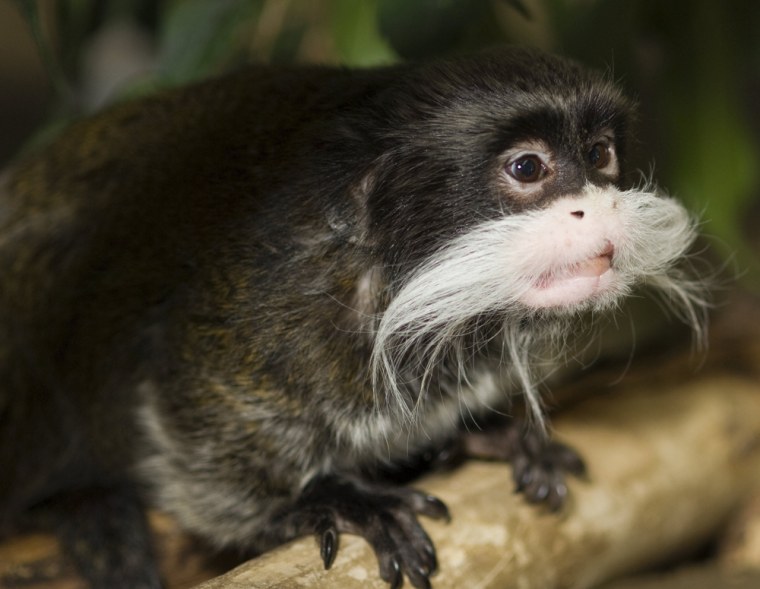Monkeys in Central and South America have amazingly diverse faces, from the white-mustached visage of the emperor tamarin to the boiled-lobster-red skin of the bald uakari. Now, research reveals that New World monkeys rely on facial coloration mostly to recognize their own species.
"We found that species that live in smaller groups have evolved more complex patterns of facial color," study researcher Sharlene Santana wrote in an email to LiveScience. "This (more complex faces) is also true for species that share their habitat with many other closely related species."
In other words, the less likely a monkey is to run into one of its own, the more complicated its facial patterns. For example, bald uakaris have a striking, but simple, pure red face. These monkeys live in large communities that can number up to 100 individuals. In contrast, the three-striped night monkey, or owl monkey, lives in small family groups with mates and offspring only. These nocturnal monkeys sport masklike white-eye markings against a background of black fur, a much more complicated pattern.
For monkeys who live in small groups, complex patterns may offer more ways to differentiate between species, which is important given how rare it is for one of these monkeys to meet one of its own. For monkeys living in larger groups, simple facial patterns might allow for better recognition of individuals and better communication via facial expressions — an important skill in a big community. [Gallery: Monkey Mug Shots]
The evolution of a face
While biologists have long suspected that facial colors arise due to some evolutionary pressures, Santana's research is the first to pin down the specific culprits.
She and her colleagues gathered monkey "mug shots" of 129 New World species (monkeys native to Central and South America) and ranked them on color pattern complexity, skin pigmentation, and length and color of facial hair. They then analyzed the patterns in terms of the social life and ecology of each species, accounting for evolutionary relationships that would lead to similarities in patterns between close relatives.
They found that habitat puts pressure on facial evolution, such that species that live in the dark, humid forests of the Amazon have darker "beards" and darker hair near the crowns of their heads, a feature that likely helps them blend in with their surroundings and elude predators. Species that live in areas with lots of ultraviolet radiation from the sun have darker eye masks, perhaps to keep down glare. Monkeys that make their homes far from the equator, in chillier climates, have longer hair on the faces, probably for warmth.
Craziest faces
The researchers also unraveled the evolutionary pressures of social interactions, finding that species made up of more isolated individuals had the most elaborate facial patterns. Some particularly fancy monkeys included the black-capped squirrel monkey, with its black muzzle and white eye mask, and the Kuhl's marmoset, which features long tufts of black hair emanating from its ears.
These quirky facial-color patterns make these monkeys stand out from other species, and in that way they allow their kin to easily spot them in the wild. Species that live in larger groups of 100 or more monkeys likely have a greater need to recognize individual monkeys; the researchers speculate that perhaps rather than color patterns, the monkeys check out facial expressions or the sizes of various facial features to particular individuals. That might be easier to do with simpler facial features.
The researchers plan to extend the facial complexity study to other primates and other mammals to see if the connection between social behavior and faces holds up. They also hope to learn more about how primates recognize faces within their own species.
"Our results shed some light about the cues primates may use to recognize the species an individual belongs to," Santana said, "but more research is needed to further link this finding to how primates use facial characteristics to recognize particular individuals."
You can follow senior writer Stephanie Pappas on Twitter . Follow LiveScience for the latest in science news and discoveries on Twitter @livescience and on .
